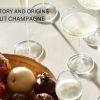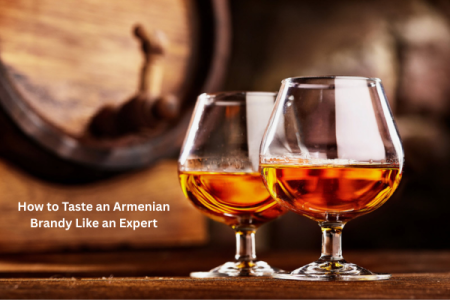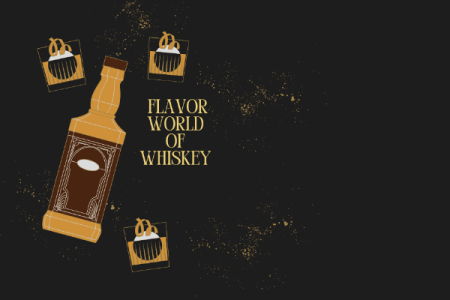What is brut champagne? Until 1870, the champagne, loved by many, was even sweeter than desserts. Yes, the light, bubbly, and slightly bitter alcoholic drink popular today had a higher level of sweetness in the past; as a result of unexpected but desirable changes in history, it acquired a completely new composition and taste over time. This is how the bitter alcoholic drink was given the name Brut Champagne. A sparkling drink with more bitter than usual, refreshing, and dry taste notes.
The origin of the brut champagne
It all began with Madame Pommery, a Frenchwoman who, having lost her husband in 1858, took over the winery despite having no prior experience, where red wine had been made for years. He started making champagne, which was twice as difficult to make as wine, after assuming complete control over the production.
The modifications made to the winery had to do with Madame Pommery's time in school. Having gone to an English school, she knew that many English people liked their wine dry. The Frenchwoman began the experimental production of brut champagne, which was practically more risky because the grapes had to be more ripe, that is, harvested later, to have natural sweetness. Meanwhile, other producers used even unripe grapes.
The society’s opinion on the first brut
Many people were unaccustomed to the new kind of alcoholic beverage and did not accept dry champagne when it was first presented to the public. However, Madame Pommery quickly gained popularity among English consumers by emphasizing quality and innovation in her brut wine. Based on a novel variety of classic sweet champagne, this marked a momentous and agreeable shift in the history of champagne.
Due to her creation of the biggest chalk cellars in the area, Madame Pommery also had a significant impact on the winery's existence. The cellars were designed to produce the ideal environment for champagne aging. That being said, the chalk cellars quickly gained popularity and attracted tourists as well. Here is how we can recall the origin, distribution, and some types of brut champagne.
But champagne types
There are many types of Brut, that have different levels of bitterness and sweetness. The famous types are the Armenian and French ones that vary with the production methods, as well as the grape type and the advantages of the region.
The Armenian brut champagne
Armenia is known for its centuries-old history of winemaking, but the production of sparkling wines in the country is a fairly recent addition. To produce Armenian Brut, local grape varieties are used, including Voskehat and Khatuni, which give the drink unique notes. Many Armenian producers create the drink in the traditional way, and some use the Charmat method. In other words, sparkling wine is aged in barrels to make it fresher and more fruity.
A popular Armenian version is KARAS Extra Brut. It has a refreshing fruity aroma and citrus flavor notes. A slight acidity is noticeable when drinking. You can combine it with seafood and fruits.
Brut French champagne
French Champagne is produced in cool climates and includes special grape varieties such as Chardonnay, Pinot Noir, and Pinot Meunier. You can describe the French Brut with complex and sour notes of taste, as well as a refreshing quality that many people prefer.
A favored type is the BODEGA DEL FIN DEL MUNDO Blanc De Noir, which is made from Chardonnay and Pinot Noir grapes. By the way, you can buy it at the Vino&Vino alcohol specialty store.
Although brut is a bitter drink, it is very different from dry wine and in order to buy correctly, you need to be able to separate them.
Brut vs extra dry champagne
Since both types of champagne have a bitter taste, let's understand what their difference is. The main difference between brut and dry champagne is the level of sweetness. The sugar content in one liter of Brut is 0-12 grams, as a result of which it gets a dry taste with a little sweetness.
Dry champagne has a higher sugar content. One liter of the drink contains 12-17 grams of sugar, as a result of which it has a sweeter taste compared to brut champagne.
Thus, if we compare the levels of dryness of the two champagnes, then Brut is drier, and when drinking extra dry champagne, you can notice a certain sweetness.
The taste notes of Brut
When sipping Brut, you can notice citrus, apple, and even cake flavor notes. Citrus notes are more pronounced due to the lack of sweetness, resulting in a more refreshing Brut drink.
The taste notes of extra dry champagne
As we already know, extra dry champagne has a sweeter taste. This is sometimes due to the ripe fruits included in the composition of the drink: pears, apricots, and even melons. It has a richer and sweeter taste that lingers longer in the mouth.
What foods can you pair Brut with
Brut can be combined with various dishes. You can especially pay attention to such dishes, which are even more pleasant when combined with a bitter drink. Here are some examples:
-
Seafood: Especially oysters, sushi, shrimp, etc.
-
Cheeses: You can choose soft cheeses, such as Brie and goat cheese. You can also combine it with aged cheeses, for example, Parmesan.
-
Appetizers: Various salads and caviar.
Such dishes have a rich taste and will be perfectly combined with the bitterness of Brut.
What food to pair the extra dry champagne with?
The slightly sweet taste of extra dry champagne allows you to combine it with fruits as well as spicy dishes. Here are some combinations:
-
Fruits: You can combine them with fresh and sweet fruits. For example, with strawberries, peaches, and mangos.
-
Desserts: You can choose not-so-sweet desserts, creating pleasant combinations when paired with champagne.
-
Spicy dishes: You can choose Asian or Indian dishes, the tangy taste of which will be broken by the light sweetness of champagne.
Thus, extra dry champagne gives the dish a certain sweetness. In other words, you can combine it with sweet dishes and create a perfect combination.
Conclusion
The well-known champagne variety known as brut was created and popularized by a Frenchwoman. The beverage has gone through several phases of development since it was first created, produced in several nations, and distributed globally. Today, brut is also produced in Armenia from local sweet and popular grape varieties, giving the centuries-old drink an Armenian touch. So, get your favorite brut type at the Vino&Vino specialty store.


















